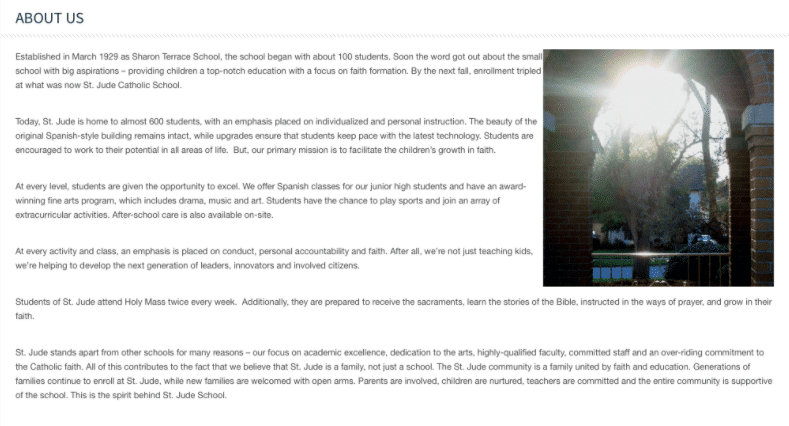New York Private Schools: Vouchers or not, you’ll need to adapt.
Schools in other states, take note. This article will help you deal with regulatory changes coming your way.
Reality Check: Although New York City’s educational system is exceptionally well-funded, its public schools are lagging behind.
Sadly, there has been a steady decline in the standards of the public education system in NYC. Although recent standardized test scores are up, the Manhattan Institute attributes the recent boost in test scores to an easier test format, fewer questions, and unlimited testing time. A result of the dumbing down effect?
Various social media and educational forums also suggest that parents are in fear for their children’s safety and concerned about the quality of education their kids are receiving within the public education system.
Ok, I hear you ask “How can we turn this problem into a revenue opportunity for our private schools?”
Well, let’s treat this as an equation and go over everything we know so far:
Great Schools + Satisfied Parents – High Tuition – No State Aid – Decreasing Enrollment + Vouchers = ?
Let’s elaborate.
Plus (+) Private school parents are significantly more satisfied across all categories , and NYC has some of the finest schools in the country.
Minus (-) NYC has some of the most expensive private schools.
Minus (-) The state doesn’t provide financial aid in the form of vouchers or tax credits for private school tuition.
Minus (-) There has been a steady decrease in private school enrollment..
Plus (+) Education Secretary Betsy Devos intends to significantly expand voucher programs (up to $20 billion). She advocates that every parent in every state should have the right to choose the best school for their child’s individual needs.
Game changer.
States like Ohio, North Carolina, Indiana and others have seen private school enrollment increase due to vouchers.
North Carolina’s Opportunity Scholarship Program, for example, provides a maximum voucher amount of $4,200 for parents. The voucher covers tuition, transportation, or any qualifying expense for private schools. With the average cost of private school tuition between $7,677 and $9,554, parents can get a notable portion of the cost covered. The state also has a special needs voucher that offers even more financial support, and will soon have a special needs ESA that can be combined with either existing voucher.
Indiana’s Choice Scholarship Program is the largest in the country. In the Fort Wayne district alone, $20 million is set aside for voucher students. In 2017, $1.1 million of that $20 million went to one private K-8 school – St. Jude Catholic School. As far as parents are concerned, i.e “the people who actually navigate the system and make choices for their families — they are overwhelmingly satisfied with the state’s programs… We know that once they choose, they become more engaged in their schools and their communities.”
If the $20 billion federal voucher program is successfully launched, federal funds will begin flowing to New York’s private schools as well. With a voucher in hand, NYC parents will have more options than ever before – and expect excellent teachers and a rigorous curriculum.
Will they choose you?
In addition to your regular audience, you need to find a way to understand and communicate effectively with your changing audience. Now is the time for each school to learn how to express their unique value proposition effectively with their new market.
Principal/Head of Admissions: How do I do that? I’m not a marketing expert, and we don’t have the budget to hire one.
Me:
1. Getting Back to Basics
We know that great teachers are the foundation for a good education. One of the best ways to get those federal dollars rolling in is by hiring and investing in highly qualified teachers.
Eye roll, yes you know. But wait.
Your current clientele may place values and character education high on their priority list. Your new audience will probably appreciate teacher quality and academic achievement the most.
Many of these NYC parents may be coming to you from a failing school system. They want to give their children an opportunity for a better future. Specifically, they want to know more about your outstanding teachers, your cutting-edge curriculum, and your sincere commitment to their child’s potential.
When you are meeting students’ needs in the classroom, they will thrive, and parents will notice. Those parents will spread the word and be the ultimate brand ambassadors for your school.
2. What They Say About You When You’re Not in the Room
Speaking of brands, your brand is what other people say about you when you’re not in the room.
But your new audience can’t talk about you if they don’t know about you.
- Do you research your new audience’s preferences, needs, and habits? Once you understand who your new potential families are, you’re able to structure your communications to their needs.
- Have you invested in a great website? How often is it updated?
- What about social media advertising? It’s the most efficient way is to make use of a marketing funnel. Stage by stage, the potential client is brought closer to enrollment. They get to know who you are, develop trust, and ultimately make contact.
- Is your school’s unique curriculum or an exceptional sports, arts, or STEM program promoted online? Do you post/tweet/pin about them consistently?
- How do you inform the prospective families before an event and promote it effectively?
Your new audience needs to know what makes your school different. They will have an opportunity to send their child to a previously unattainable private school, and they’re going to choose carefully.
3. What People Say About You When They Compare You to Your Competitors
Other private schools are eyeing your prospective students and your voucher dollars. These schools are probably already promoting themselves by:
- Advertising their open house events and unique attributes
- Using social media effectively
- Geotargeting their intended audience
- Studying their competitors (website, social media posts, comments, events)
You need to start doing all the above, one step at a time. By understanding a prospective family’s other choices, you’re able to market your strengths accurately.
St. Jude Catholic School, for example, is doing something right. They are attracting new families and reaping the benefits of a successful voucher program.

Now, we don’t know if the School Choice Act will pass or not.
What we do know is that NY families, with or without ESA’s/vouchers/tax credit deductions, have numerous interdistrict school options – including a wide variety of private schools. Imagine what will happen as soon as the act passes. Every school will want their piece of the pie and will inevitably implement all the above.
As a result, parents will be overwhelmed by all this noise and will probably look at the one who “shouts” the most.
Our advice is to anticipate the inescapable change and establish a digital communication strategy immediately to start building trust with your prospective audience.
Takeaway: Make sure you position your brand in the best possible way, and you will benefit from the digital era’s trends, with or without a school choice program.
P.S. ⏤Need some proof that these strategies work well? Take a good look at this school’s website, blog and social media. Then call them and ask to register. You’ll be surprised by their answer – they are fully booked for the next two years.
If you have anything you’d like to add or find out more about, comment below and we’ll gladly include it in our next article.
